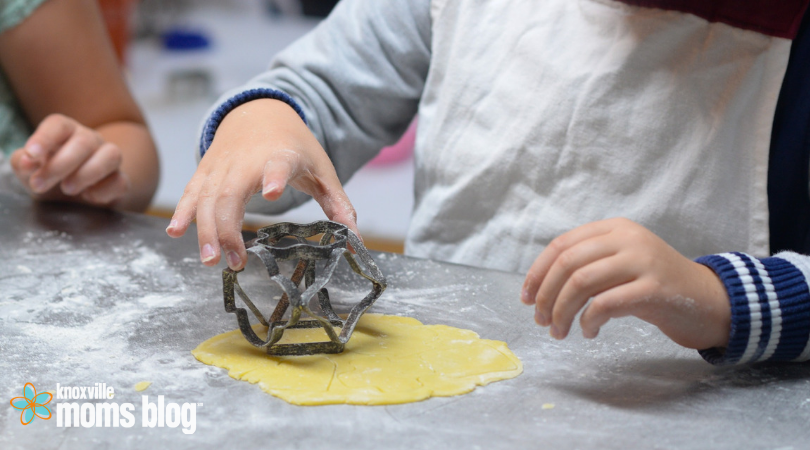
My toddlers cooked dinner last night.
No, really. My four-year-old and two-year-old prepared our dinner, and it involved the stove.
Before you panic about our house burning down, let me explain how we got here. I didn’t just toss them in the kitchen and take a nap. We’ve been building up to this for quite some time. Lots of little lessons for years have culminated in two kids, still not in elementary school, preparing an entire dinner.
Several years ago, my husband and I got hooked on Master Chef Junior. It’s the pint-sized version of the competition cooking show hosted by Chef Gordon Ramsey. We were blown away by these young children between the ages of eight and 12 preparing dishes such as lobster etouffee and steak au poivre. Surely they didn’t start cooking yesterday? They must have begun learning at a very young age. Could we teach our babies to cook, too? It turned out to be a lot easier than we thought.
Why should kids learn to cook?
Besides the obvious important life skill, there are so many benefits to teaching children to cook.
They learn introductory math and science skills.
When kids cook with their parents, they are introduced to fractions, measuring, counting, time, volume, weight, and the interaction of all these properties. Of course, toddlers don’t fully understand these concepts, but they begin to learn that they matter and should be accounted for.
Every cooking experience is like a science experiment to kids, and kids LOVE science experiments. “What’s that stuff rising out of the pot?” asks a child. “That’s steam,” says Mom. “Steam rises when water gets hot.” Kids love mixing eggs into flour and watching the egg change the consistency of the dough. They love watching pasta change from a solid shape to soft macaroni ready for cheese. They are so curious about how that happens, and this provides great opportunity for teaching science in the real world.
They learn basic kitchen safety.
Every cooking experience is supervised. Always wash your hands first. When you cook with your children, teach them WHY you always wash your hands after touching raw chicken. Teach them HOW to check food for freshness. Explain why it’s important to clean up when you’re done, and let them help! They love using Clorox wipes.
Safety is paramount when teaching toddlers to cook, but teaching them the WHY is just as important. We use long-handled utensils and pot holders because the pans are too hot for our fingers. While my children are young, I keep my body between them and anything boiling on the stove. They have a special spot they stand in any time an adult opens the oven door. These are safety skills they will carry into adulthood.
They soak up the one-on-one time.
I don’t know a kid who doesn’t love special attention from their parents. One-on-one dates and play time are awesome, but sometimes you just need to get work done. Even after a long day at work and busy schedules, you still have to cook dinner, right? What a great time to make memories! Does it take a little longer cooking with kids? Yes. Does the thought of supervising children over a stove give me anxiety? At times. But I promise; once you get started, you’ll love it.
They might be more willing to eat it.
I know this is a big might. Kids are picky and pretty unwilling to bend on what they like and don’t like. In my house though, we’ve had much more success with eating dinner when my kids helped prepare it. They are eager to try the broccoli they helped sprinkle with Parmesan. They picked out which piece of chicken was “theirs” early on and now are proud to serve it on their plate. I’m not making any promises, but it’s worth a shot, right?
How can you get started?
I’m confident that once you invite your toddler to help you cook, you’ll find ways to incorporate them into the process, but here are some great jobs for toddlers:
- Breaking the broccoli crowns off the stalk.
- Shaking spices onto food.
- Placing pepperonis on pizza.
- Stirring everything (we “take turns” so the bowl still gets a good dose of adult arm power).
- Cracking eggs.
- Spooning filling into tortillas for burritos or quesadillas.
- Flipping pancakes (with hand-over-hand help from adult).
- Washing veggies.
- Pouring pre-measured ingredients.
- Cutting soft ingredients (at your discretion. Here are some great kid-safe knives that will introduce them to basic cutting skills).
So, what did my toddlers make for dinner last night? Omelettes. My four-year-old cracked eggs into a bowl. My two-year-old whisked them. I helped pour the eggs into a hot pan. My four-year-old sprinkled the cheese in the eggs and poked them with a spatula until she deemed they were ready to fold. She folded them over and flipped them. My two-year-old plated them and carried each plate to the table. I was beside them the whole time, but they orchestrated the meal. It was a simple dish, but a dish with promise.




















